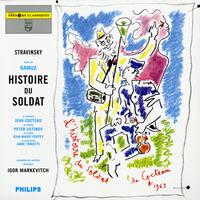x
You have added Stravinsky: Histoire du Soldat ~ LP x1 180g to your shopping cart!
The creation of "Histoire du Soldat" is closely connected with actual incidents during the war. Because the local theatre was closed in 1918, the last year of the war, Stravinsky and the Swiss writer Charles Ferdinand Ramuz decided to create a work that did not demand a large venue or big audience to be effective. The result was a theatrical work for a small ensemble consisting of a narrator, two actors, a dancer and seven musicians. On a par with the scarcity of the resources is the tightly knit construction of the work in which the scenes and musical sections are strung together like a suite. Just as in his ballets, Stravinsky relies on the dance-like energy of his music, which not only includes various march rhythms but also the tango, waltz and ragtime. The spoken word is also brimful of rhythmic vitality and is impressively rendered by the enormously adaptable voices of Jean Cocteau as the Narrator and Peter Ustinov as the Devil. Igor Markevitch urges on the excellent musicians in his little orchestra with élan and accuracy, with the young Maurice André's brilliantly performed trumpet part being particularly conspicuous.
Track Listing
1. Le Recitant
2. La Diable
3. La Soldat
4. La Princesse
Track Listing
1. Le Recitant
2. La Diable
3. La Soldat
4. La Princesse
Customer Reviews
LEAVE A REVIEW

